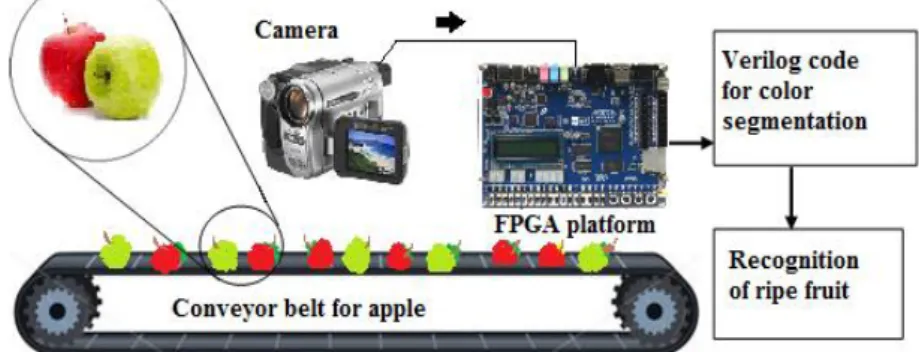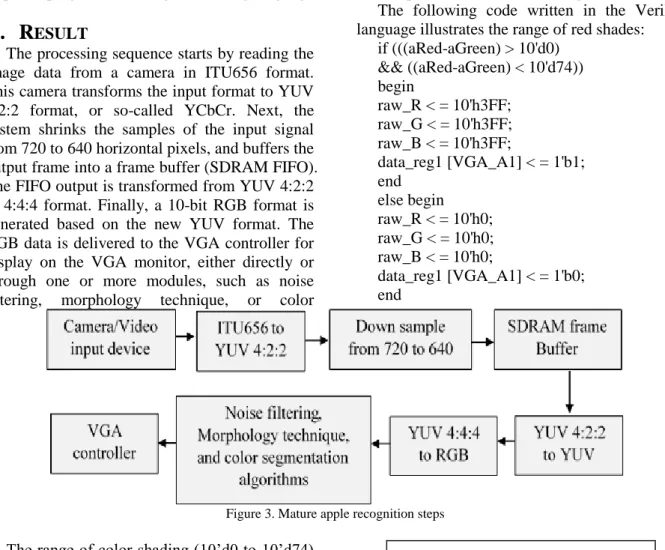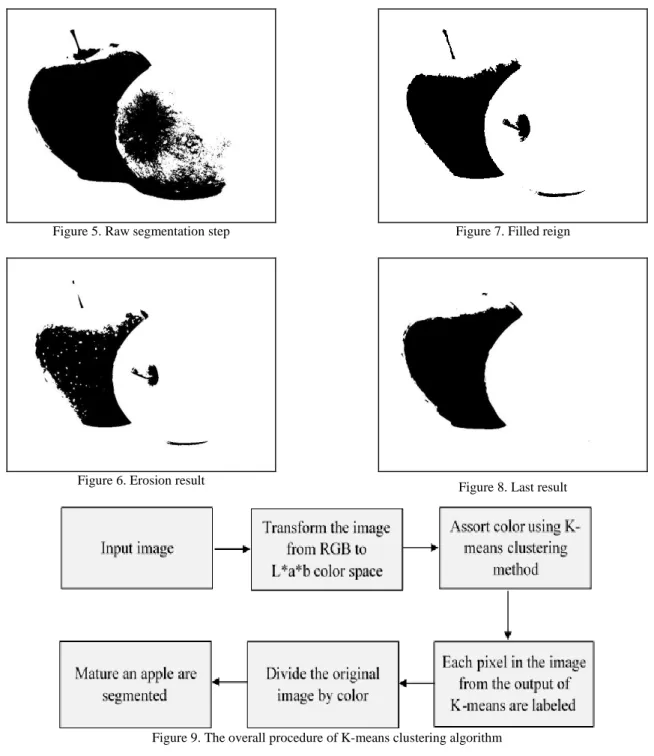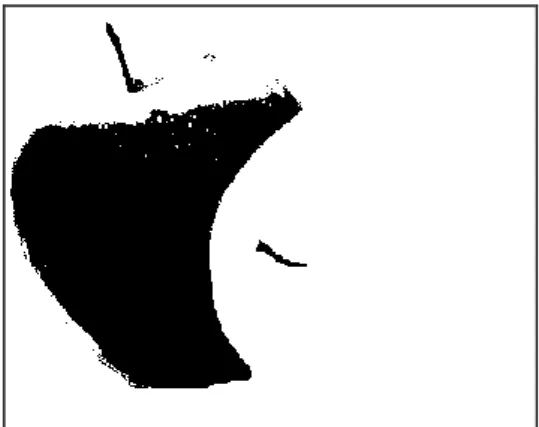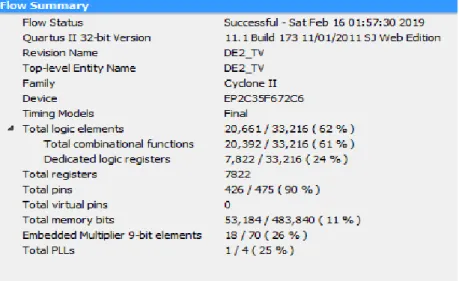第 54 卷 第 6 期
2019
年 12 月
JOURNAL OF SOUTHWEST JIAOTONG UNIVERSITY
Vol. 54 No. 6
Dec. 2019
ISSN: 0258-2724 DOI:10.35741/issn.0258-2724.54.6.52
Research ArticleComputer and Information Science
E
NHANCING
A
PPLE
M
ATURATION
R
ECOGNITION
P
ERFORMANCE
B
ASED ON
F
IELD
P
ROGRAMMABLE
G
ATE
A
RRAY
I
MPLEMENTATION
基于现场可编程门阵列实现的苹果应用程序成熟度识别性能
Fouad H. Awad a, Mohammed A. Fadhel b,c, *, Khattab M. Ali Alheeti a, Omran Al-Shamma b, Laith Alzubaidi b, d
a
Computer Networking Systems Department, College of Computer Sciences and Information Technology, University of Anbar
P.O. Box: 55431, 55 Ramadi, Anbar, Iraq, fouad.hammadi@uoanbar.edu.iq, co.khattab.alheeti@uoanbar.edu.iq
b University of Information Technology and Communications
Al-Nidhal St., Baghdad, Iraq, Mohammed.a.fadhel@uoitc.edu.iq, o.al_shamma@uoitc.edu.iq
c
College of Computer Science and Information Technology
,
University of Sumer Rifai, Dhi Qar, Iraqd Faculty of Science & Engineering, Queensland University of Technology
2 George St., Brisbane, Australia, laith.alzubaidi@hdr.qut.edu.au
Abstract
Recently, several techniques have been developed for vegetable and fruit maturing recognition. Adding hardware designs will enhance the recognition performance. Especially, parallel processing designs efficiently speed up the process functions. This paper utilizes a hardware parallel processing design called field programmable gate array for that purpose. In addition, two different methods; namely K-means clustering and color thresholding are used for recognizing the apple maturation. This study aims to design and implement a mature apple recognition system based on field programmable gate array. The results demonstrate that the color thresholding technique is faster, more reliable and more effective than the K-means clustering technique.
Keywords: Color Thresholding, K-Means Clustering, Fruit Mature Recognition, Field Programmable Gate Array, Parallel Processing
摘要 最近,已经开发了几种技术来识别蔬菜和水果。添加硬件设计将提高识别性能。特别地,并 行处理设计有效地加快了处理功能。为此,本文采用了称为现场可编程门阵列的硬件并行处理设 计。另外,两种不同的方法; 也就是说,使用 K 均值聚类和颜色阈值识别苹果成熟度。本研究旨 在设计和实现基于现场可编程门阵列的成熟苹果识别系统。结果表明,颜色阈值技术比 K 均值聚 类技术更快,更可靠,更有效。 关键词: 颜色阈值,K 均值聚类,水果成熟识别,现场可编程门阵列,并行处理
I. I
NTRODUCTIONEarlier, the human perspective to differentiating between mature and immature fruits was erroneous [1]. Currently, several methods are being improvised to enhance the working speed and reduce system failure to identify mature and immature vegetables and fruits. One of these methods is image partitioning. It is the primary part of the human visual observation, which refers to partitioning an image into various segments that are homogeneous according to a specific image characteristic. People depend on dividing their environment into different parts to help distinguish them and guide their movements on using their visual sense [2].
The analysis of objects’ shape, color, texture, and motion in images represents many complex processes for the human visual system. However, image partitioning is a normal activity. Unfortunately, there is no easy way to generate artificial algorithms whose execution is like the human visual system. Image partitioning is weakened by several suspicions rendering the greatest simple partitioning techniques ineffective due to a tendency to underestimate the difficulty of the problem. This occurs because the human performance is mediated by methods is the main problem which obstruct the successful development partitioning theories [3]. Tasks such as feature extraction and object recognition depend considerably on the quality of partitioning. If a partitioning algorithm operates inefficiently, an object may never be recognizable. Significant care is therefore taken to increase the probability of successful partitioning.
The last few years have witnessed the rise of deep learning fields and their employment in different applications, such as those involved in the medical sector [29], [30]. However, one of the most serious barriers to deep learning is the lack of training data. This deficiency discouraged us from implementing this innovation in our work. Contrastingly, the use of field programmable gate arrays (FPGAs) boosts performance efficiency [31], [32], thus driving its implementation in the present research.
II. L
ITERATURES
URVEYThe foundation of any image is color composition, which is critical to, for example, the identification of image elements such as fruits and vegetables. Consequently, most studies commonly use models that are based on color identification [4], [5], [6], [7], [8], [9]. A case in point is the work of Xu et al. [5], who proposed a color-grounded model that can be used to analyze
color information regarding fruit. The model uses red-blue (R-B) chromatic deviation information to identify oranges on a tree. A similar study is that conducted by Arefi et al. [11], who combined the divergences between a background and ripe and unripe tomatoes with loss separation to complete tomato identification. The authors then performed morphological analysis to complement color features via shape information and accordingly identified tomatoes on an image. Despite the benefits provided by these methods, however, they fail to acceptably identify elements on images with specific crucial backgrounds [6].
In contrast to the above-mentioned approaches, the machine vision system developed by Hannan and Bulanon [6] combines shape analysis, adaptive segmentation, and a color model in detecting red and green oranges. More specifically, the shape analysis model uses the Hough transform to simplify target identification [10]. Identification based on texture can be very helpful in detecting and classifying objects because it contributes significantly to vision perception [8], [12], [13]. In recent years, machine learning methods have become very popular and widely used by many researchers [7], [8], [14], [15], [16]. Such approaches involve several different methods, such as soft computing, supervised classification, and unsupervised classification. Machine learning was implemented by Bulanon et al. [15] in their use of K-means clustering to detect red apples, but the changes that they applied to lighting conditions negatively affected classification accuracy. Chinchulun et al. [16] used a supervised classifier to detect citrus fruits and eliminate the risky effects of different lighting conditions. Similar to color-based identification, however, detection anchored in machine learning still suffers from insufficient accuracy in real-world applications. To increase detection efficiency and accuracy, Ji et al. [7] used a support vector machine to classify apples, and Dubey and Jalal [8] applied an approach based on a multi-class support vector machine to classify vegetables and fruits. The latter combines texture and color, thereby enhancing classification accuracy. These techniques exhibit high accuracy in fruit classification, but they are time-consuming and inapplicable to real-time processing.
To address the deficiencies discussed above, the current research adopted the parallel architecture concept in identification and classification. It investigated the implementation of FPGAs in accelerating the classification of
mature apples. The results indicated extremely accurate performance in real time.
III. F
RUITS
EGMENTATIONFruit segmentation depends on colors for an image to be partitioned into significant regions. Image partitioning is accomplished through the use of monochromatic images, whose intensity is the only source of information for division. A more desirable strategy is the partitioning of color images, instead of grayscale images, because the human eye can detect thousands of color intensities and shades. In the case of grayscale images, however, the human eye can identify only two dozen gray shades. The main purposes of using color images are to extend identification capacity, derive more information for such detection, and ensure fast information processing [1].
A. Color Conversion
Color images are converted from RGB to YCbCr images for two reasons:
1. Intensity is the aspect in which images most strongly differ. Hence, the majority of signal energy is focused on a luminance element through the translation process.
2. The weights used to convert an RGB image into a YCbCr one are influenced by the relative sensibility of the human visual system, and this conversion is implemented using many codecs.
The transformation equations [1], [18] in this regard are as follows:
where is the luma component, denotes the red-difference chroma component, and represents the blue-difference chroma component. Table 1 lists the red shades and corresponding decimal values of R, G, and B intensities for each shade [19].
Table 1. Red shade
Red shades Light Hex RGB
90% #FFCCCC RGB(255, 204, 204) 85% #FFB3B3 RGB(255, 179, 179) 80% #FF9999 RGB(255, 153, 153) 75% #FF8080 RGB(255, 128, 128) 70% #FF6666 RGB(255, 102, 102) 65% #FF4D4D RGB(255, 77, 77) 60% #FF3333 RGB(255, 51, 51) 55% #FF1A1A RGB(255, 26, 26) 50% #FF0000 RGB(255, 0, 0) B. Color Thresholding
Color thresholding involves the assignment of a label to every pixel primarily to detect which pixels have its place in each set of colors. The output is a labeled image given that every single label is matched to a class of colors. Combining a color class with a rectangular box in color coordinates is a simple computational method, which entails the use of a couple of thresholds in each part the define the box boundaries alongside that part [20]. Illumination must be fixed to use an RGB space for the purpose of ensuring a robust relationship among the three basic elements, namely, red, green, and blue. These elements must be resized with illumination. When intensity changes, points travel crosswise in RGB space, which in turn, compels the enlargement of the box. Therefore, only a small number of separated colors can be discovered. In addition, colors are poorly recognized [21], [22]. Some improvements occur as a result of conversion to YCbCr images because rectangular boxes that are adjacent to YCbCr axes become crosswise in RGB space. The maximum of red, green, and blue elements or luminance resizes chrominance components, thus achieving enhanced discrimination [22], [23]. The circuit shown in Figure 1 needs to be repeated for each color class to be detected.
C. K-Means Clustering
Clustering is an effective method for image processing of fruit. It is one of the most frequently used techniques in classifying objects into numerous distinctive sets or dividing a dataset into clusters. Dividing data is a method for statistical data analysis, which is utilized in various fields such as data mining, bioinformatics, pattern recognition, machine learning, and image analysis [17].
Figure 1. Color thresholding circuit
Separating the data set into k subsets is a computational task called unsupervised learning. There are many methods of clustering. K-means technique is one of them. It is a typical clustering algorithm considered for a wide variety of functions [18], [23]. With the purpose of determining the pixel sets presented in an image, K-means is exploited. K-means is very fast and attractive in exercise because it is straightforward. The data set can be partitioned into k clusters by
K-means. All the clusters are indicated with cluster centers, beginning from particular original values called seed points. In the K-means technique, the distances between the centers and the input data points are calculated, and these input points are allocated to the closest center. This technique categorizes the input data objects according to their inherent distance from each other into several classes [24], [25].
However, the vector space in a clustering algorithm is designed from features of the data. A clustering algorithm attempts to classify clustering inside it. Note that clustering the objects should be about the centroids μi∀i equal to 1 [1], [26].
(2) Note that the number of clusters is represented by k, where, , i = 1, 2 , . . . , k, and μi is the mean point or the centroid of each point in ∈ . An iterative version of K-means algorithm is applied as part of this design.
Figure 2. The hardware setup for the ripe apple recognition system
The input should be a color image as required by the algorithm. K-means clustering algorithm performs the following:
a) Calculates the intensity values distribution.
b) K random intensities are employed for initializing the centroids.
c) Steps 4 and 5 are repeated until there is no further change in the cluster labels.
d) Cluster the image points according to the distance from the centroid intensity values to their intensity values.
c(t): = arg min j (3) e) Each new cluster centroid will be computed.
(4)
where i is the centroid density, t iterates over each value of intensity, j iterates over each centroid of each cluster, and k is the number of the clusters.
IV. H
ARDWARES
ETUPThe FPGA technique has become widely used in video and image processing applications due to their architecture. The main goal of this work is to design and implement a ripe apple recognition based on FPGA. When the size of an image and bit depth increases, the software becomes less useful in real-time image-processing applications. These real-time systems need a powerful processor to increase speed. The problem is dealing with huge data. Since FPGA performs the logic the application requires by constructing independent hardware for each function, the FPGA is parallel and inherent. These aspects give FPGA speed in calculation result and relatively
less cost. This makes FPGA very suitable for image-processing experiments [27], [28].
Figure 2 shows the hardware setup for the ripe apple recognition system. Firstly, the input image is taken by a real-time camera on the conveyor belt that carries the apples. Next, these images are sent to the FPGA (here using Altera DE2 Cyclone II) for classifying apples as ripe or unripe fruits, dependent on color segmentation algorithms. It is worth mentioning that these steps are programmed using the Verilog language.
V. R
ESULTThe processing sequence starts by reading the image data from a camera in ITU656 format. This camera transforms the input format to YUV 4:2:2 format, or so-called YCbCr. Next, the system shrinks the samples of the input signal from 720 to 640 horizontal pixels, and buffers the output frame into a frame buffer (SDRAM FIFO). The FIFO output is transformed from YUV 4:2:2 to 4:4:4 format. Finally, a 10-bit RGB format is generated based on the new YUV format. The RGB data is delivered to the VGA controller for display on the VGA monitor, either directly or through one or more modules, such as noise filtering, morphology technique, or color
segmentation algorithms. Figure 3 illustrates the data flow diagram of the video decoder hardware for ripe apple recognition.
After reading the input image (e.g. Figure 4), “1” represents all detected pixels and “0” represents the other pixels, as shown in Figure 5. The binary thresholding explained that the fruit is shown as black and the background is shown as white. The first step is segmenting the ripe apple by the color thresholding technique, which, in turn, depends on the color shading.
The following code written in the Verilog language illustrates the range of red shades:
if (((aRed-aGreen) > 10'd0) && ((aRed-aGreen) < 10'd74)) begin raw_R < = 10'h3FF; raw_G < = 10'h3FF; raw_B < = 10'h3FF; data_reg1 [VGA_A1] < = 1'b1; end else begin raw_R < = 10'h0; raw_G < = 10'h0; raw_B < = 10'h0; data_reg1 [VGA_A1] < = 1'b0; end
Figure 3. Mature apple recognition steps
The range of color shading (10’d0 to 10’d74) is tested randomly by the trial-and-error method to select the required color. For enhancing the binary image, the morphology technique is applied, such as the erosion process to remove the separated pixels. Next, the dilation process is used for filling the holes in the black region, as shown in Figures 6 and 7. Figure 9 illustrates the steps of the K-means clustering algorithm. Initially, the color image of the strawberry fruit is converted to the L*a*b model. Next, the color is classified using the K-means method. Labeling each pixel of the algorithm output is the next step, followed by separating the original image by color. Figures 10 to 13 illustrate the results.
Figure 5. Raw segmentation step
Figure 6. Erosion result
Figure 7. Filled reign
Figure 8. Last result
Figure 9. The overall procedure of K-means clustering algorithm
Figure 12. Noise-removed binary image
Figure 13. Cropped fruit region
Figures 14 and 15 summarize the flow summary obtained from Quartus II 11.1 web edition (32 bit) from the Altera DE2 Cyclone II (EP2C35F672C8) family. With a look at these summaries, we found the total logic element (total combinational functions and dedicated logic register), total register, total memory and embedded multiplier bits for color thresholding are greater than K-means clustering in hardware components, due to the complex operation of the latter technique.
Figure 15. Flow summary of K-means clustering
Table 2 lists the execution time for both techniques. The time exhausted in color thresholding is smaller than K-means clustering due to the simplicity of the process of color thresholding that affects the hardware design size.
Table 2.
The execution time on Altera DE2
Technique Execution time (msec)
Color thresholding 10.2478 K-mean clustering 64.8741
VI. C
ONCLUSIONSThis paper employed two techniques for performing apple mature recognition; which are color thresholding and K-means clustering. The results obtained the following points:
Red color thresholding is simpler than K-means algorithm, since it requires only the intensity information for the detection process, while the K-means requires training and learning algorithms for finding the clustering center.
At changing the luminance, the K-means method would find the chosen red shade, while color thresholding finds only a binary color at another contrast band. This procedure needs to be repeated for the execution of the searching algorithm at any change in the environment.
Color thresholding is faster than K-means, as well as requiring less significant hardware design.
![Table 1 lists the red shades and corresponding decimal values of R, G, and B intensities for each shade [19]](https://thumb-ap.123doks.com/thumbv2/123deta/8047359.1255180/3.892.481.809.85.187/table-lists-shades-corresponding-decimal-values-intensities-shade.webp)
